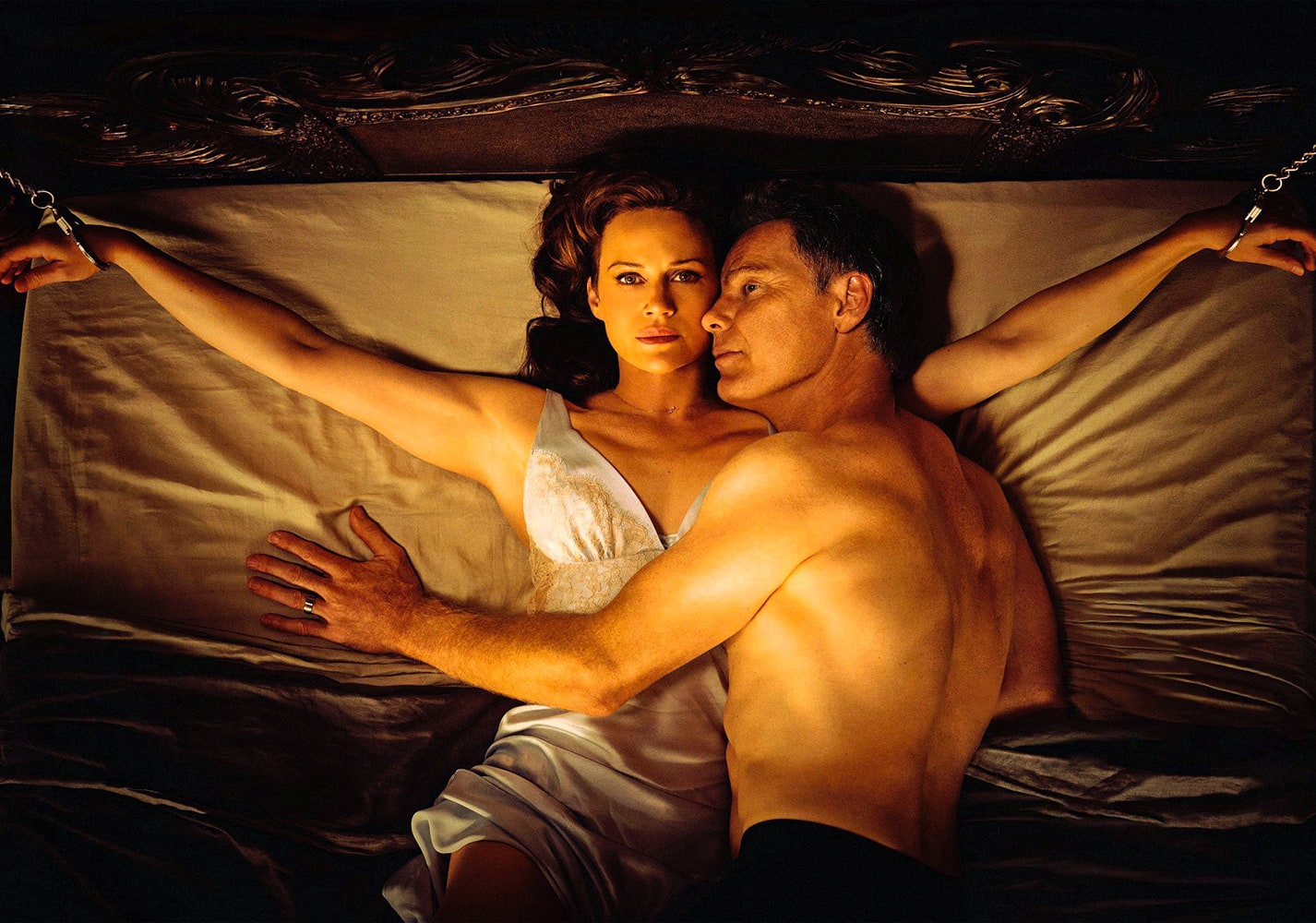Gerald’s Game was always a particularly unique book among Stephen King’s vast collection of horror tales. To hear it explained, Gerald’s Game sounds like something that is quite unadaptable for screens… in fact, the general consensus was that it was for many years.
Afterall, the story is primarily a woman chained to a bed, slowly growing mad. With very little present-day “action” or other characters or conversations. Then comes Mike Flanagan and Netflix.
So what is Gerald’s Game all about, and how does the Neflix movie explain and expand on what Stephen King is doing in the story? There is a lot to unpack.
Gerald’s Game: An Explanation and Analysis
Gerald’s Game is a book published in 1992 and a movie released in 2017 that centers on a woman, Jessie Angela Mahout Burlingame. She and her husband Gerald travel to an isolated house for a vacation together. When Gerald suggests handcuffing her to the bed for some sexual “play” he subsequently dies of a sudden heart attack.
The rest of the story is Jessie left handcuffed to the bed and with little hope of rescue. She must find a way to survive, which also turns into a growing conversation with herself, her memories, and ultimately a battle with her inner demons.
The story was originally envisioned by Stephen King as a book In the Path of the Eclipse. That story was turned into two connected books that tackle similar themes of abuse and gender inequality: Gerald’s Game and Dolores Claiborne.
Both books have a central event that bind them: the solar eclipse of July 20, 1963.
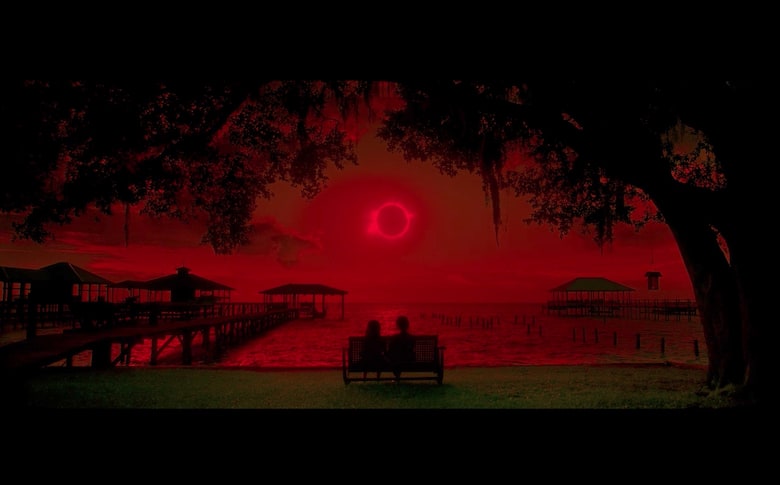
In Gerald’s Game Jessie wrestles with her relationship with her husband at first. How she often caved to his desires, including the bondage she finds herself in. But eventually it turns to her relationship with her father, and how Gerald is in many ways a continuation of the abuse she endured from her father Tom.
What is particularly interesting is the imagery used in the book and the Netflix movie: the handcuffs, a wedding ring, a solar eclipse, and the eyes of the Moonlight Man. But wait. Who is the Moonlight Man?
Who is The Moonlight Man?
Before explaining the Moonlight Man in Gerald’s Game, it’s important to note that the Midnight Man has become a well-known creepypasta story and paranormal or sleepover game. So although Stephen King uses the term in the book before all of that, when you hear people talk of the Moonlight Man, they may be referring to or confused with that urban legend.
In Gerald’s Game The Moonlight Man is a figure that comes to Jessie late at night when she is handcuffed to the bed. Whether he is real or not is left very vague at first. He is played by actor Carel Struycken who has acromegaly.
The character in the book is named Raymond Andrew Joubert, who is described as a grave robber, necrophile, and serial killer. He comes to Jessie with leering eyes and odd trinkets, an image that is dreamlike and eerie and does not seem like it could be real.
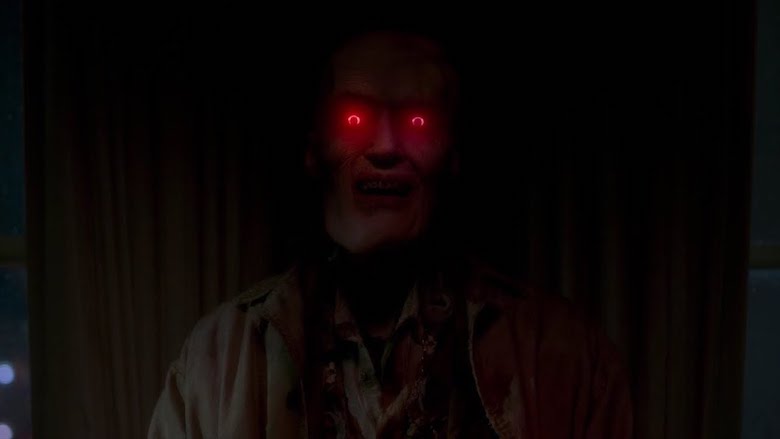
By the end of the movie Gerald’s Game it is found out that he is real. He isn’t just a figment of her imagination. Jessie faces him in court as a way to face her past and the men of her life.
The Ending Explained
At the end of Gerald’s Game, Jessie finally escapes the handcuffs. Cutting her hand actually allows her to peel back the skin and slip the handcuff off, which is both intense to watch, but also symbolic. She remembers cutting herself in a memory coming back to her, facing her trauma, and peeling off her own skin is akin to opening up her own suppressed memories.
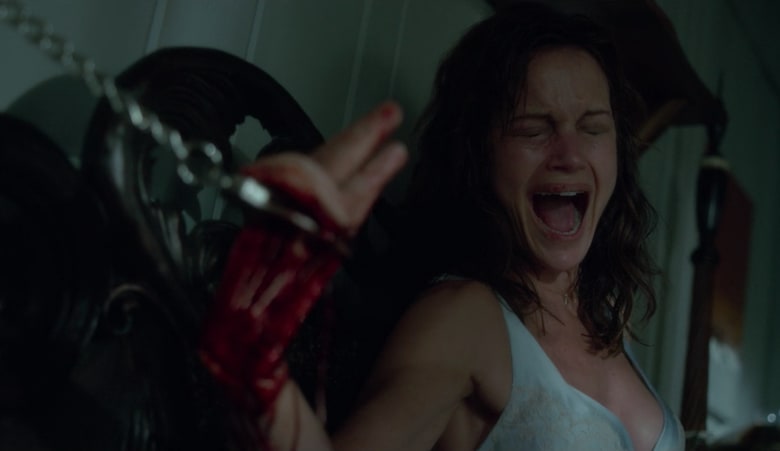
She escapes the house. She gets in her car to drive for help, but briefly sees the Moonlight Man or the “man made of moonlight” and crashes the car. But ultimately, she is rescued and survives.
The story picks up six months later. She is writing a letter to her younger self, the one she was flashing back to that was abused by her father. She realizes that her memories was suppressed for so long. She still sees the Moonlight Man who appears to her at night. In many ways this dream of someone appearing to you at night is akin to the infamous Pale Lady of Scary Stories to Tell in the Dark.
Jessie hears on the news that a serial killer was apprehended, and she recognizes him as the man who appeared to her at night. This man digs up bodies, stealing their jewelry and bones and even eats their faces. The Moonlight Man was real, but it also explains why Gerald’s face was mutilated (it was him) and it explains why he did nothing to her. He was deranged, but was more interested in dead bodies, not the living.
Jessie confronts the Moonlight Man in court, where she briefly sees the faces of Gerald and her father in his face.
— FOUNDATIONS OF HORROR —
Further explore these subgenres & tropes. more>>
#Sex and gender horror | #Psychological horror | #Never Sleep Again

This Moonlight Man and that ending is a remarkable distillation of abuse for many women. First, it is often not acknowledged by women at first. It is rationalized. It is thought to be their imagination. Secondly, these memories appear to them at night when they are alone with their thoughts. It can’t directly touch them, and it doesn’t entirely make sense. It appears as fragmented memories that the woman must try to understand in some way. Thirdly, abuse in childhood often results in repeated male-female dynamics, where the men in their life tend to place them in certain “bonds”… relationship dynamics that the woman often doesn’t understand fully (until they are forced to confront them) and are carried through to adulthood. There is so much to unpack in Gerald’s Game, which makes it a fascinating story.
The wedding ring and the handcuffs become part of something more psychologically interesting. Symbolic. Which is how we come to a subject I know a lot about, and that is the story of the Green Ribbon.
The Cuffs: A Symbolic Green Ribbon
The story of the Green Ribbon is known by generations of kids, now adults. It has a long history, but many know it as appearing in a children’s book In a Dark Dark Room.
The simple tale involves a girl that wears a green ribbon all the time. Her suitor asks why she has it, but she will never tell. They get married and grow old together, and the girl never takes the green ribbon off and never tells him why she has it. On her deathbed she finally allows her man to take it off, and when he does, her head falls off.
It’s become a devilish tale for generations of people who find it haunting. But to me it also has become an interesting symbol for womanhood. In Carmen Maria Machado’s “The Husband Stitch” the green ribbon is used as a potent symbol, one about the cultural binds that men put on women.
In Gerald’s Game I think we see a different version of the same basic tale. In The Green Ribbon, The Husband Stitch, and Gerald’s Game, a woman is asked to adorn something for her man. She is trying to please him by wearing something she perhaps doesn’t want to. And in all of them, she has a secret, one that is being held together by this ribbon, ring, or handcuff.
In all of these cases, in a lot of ways it is the woman’s true self that is the secret. It’s about her looking presentable for her man.
Explaining Gerald’s Game in this way, we have what I would consider the proverbial Green Ribbon. The handcuffs.
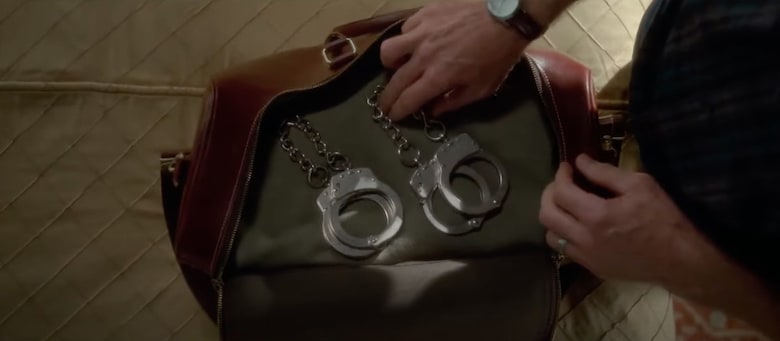
They are:
- Sexual in nature.
- They are all about a PROMISE. Very similar to a wedding band. Marriage can be seen as a PROMISE that a wife gives to a husband. This new, kinkier, band around her wrists is a stand-in for that promise… in this story, her promise is to please her husband, play along with his game.
- Most importantly, these handcuffs are all about CONTROL.
I dissect this further in this JoBlo commentary… the video skips to the Gerald’s Game portion, but feel free to watch the entire video where I look at the Green Ribbon as a template for several horror stories.
When her husband dies of a heart attack, what follows is Jessie’s maddening attempts to survive the situation. And her memories come flowing back to haunt her. Many of the conversations she has with her dead husband and ultimately herself are about the small ways in which she as a woman has navigated her life keeping her head attached… in place… protect social conventions… don’t speak up. It often starts with a trauma at an early age.
In Gerald’s Game a solar eclipse that has the same shape as handcuffs, a wedding band, a ribbon around the neck.
Her facing the Moonlight Man in the end symbolizes many things. Is she facing all men in that moment, all of society? Or is the Moonlight Man death itself. Her husband’s handcuffs and the trauma from her father were things she needed to work through, societal and cultural fears, on her way to face the ultimate fear that we all must face in the end, and that is death.
At the end of Gerald’s Game, she is in her green dress (the same color as the sweater underneath the handcuffs in the beginning).
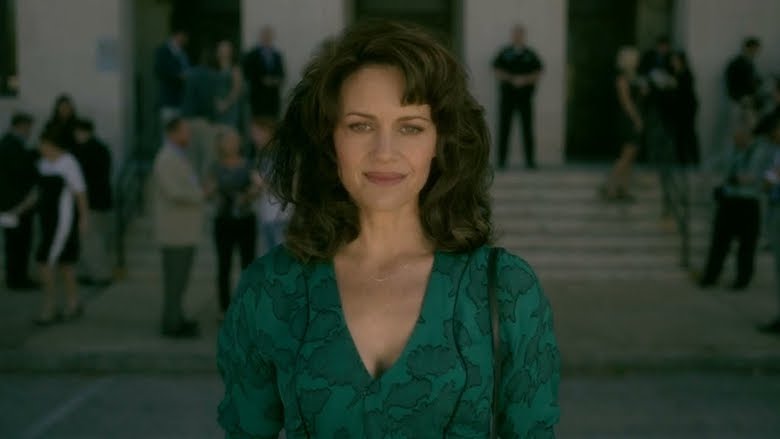
She is no longer strapped to her fears. No handcuffs, no wedding ring. She walks away, unbound.
Further Reading
Why the Last 10 Minutes of Gerald’s Game Elevate the Film to Greatness
The Symbol of a Ribbon in “The Husband Stitch”
Last Updated on April 15, 2022.

